Flat Water Nymphing
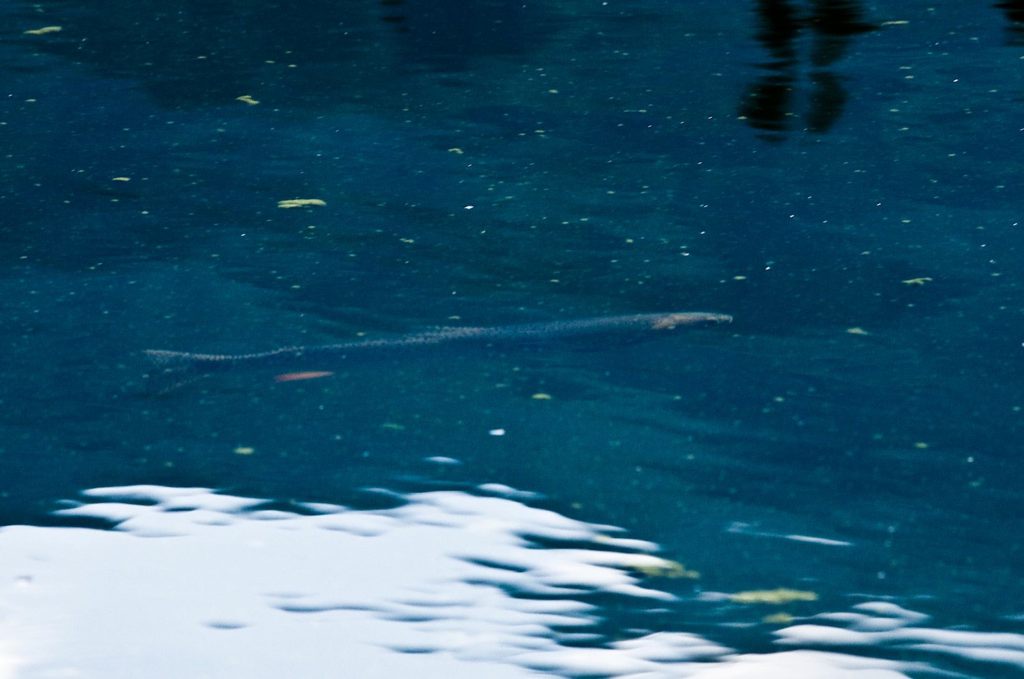
The past few years, Louis and I have grown very fond of one specific pool tucked up in mountains of the southern appalachia. We visit it regularly because of the bounties of trout that it sustains and nurtures year round. We nicknamed it the “lazy boy pool”, because it constantly has food entering the pool and its slow moving water and deep water cover requires little energy for fish to feed round the clock. It’s loved by lazy trout and they in turn grow big and fat. Despite the large numbers of trout the pool holds, angler won’t find it to be a cake walk for catching them. To have success in this pool you have to bring your A-game. The fish have grown wise to fly anglers and the glass calm and crystal clear water adds further to the overall challenge. Trout here, get to examine your flies for long periods and they regularly dish out more refusals than eats. It’s had Louis and I pulling our hair out on multiple occasions. If we need our ego’s checked, this is the perfect place for us to do that. It never fails to reminds us we are far from having it all figured out. The slightest mistake by an angler will send wakes across the water alerting all the trout in the pool, and when that happens, the fish get lock jaw.
Read More »Lowcountry Winter Redfish
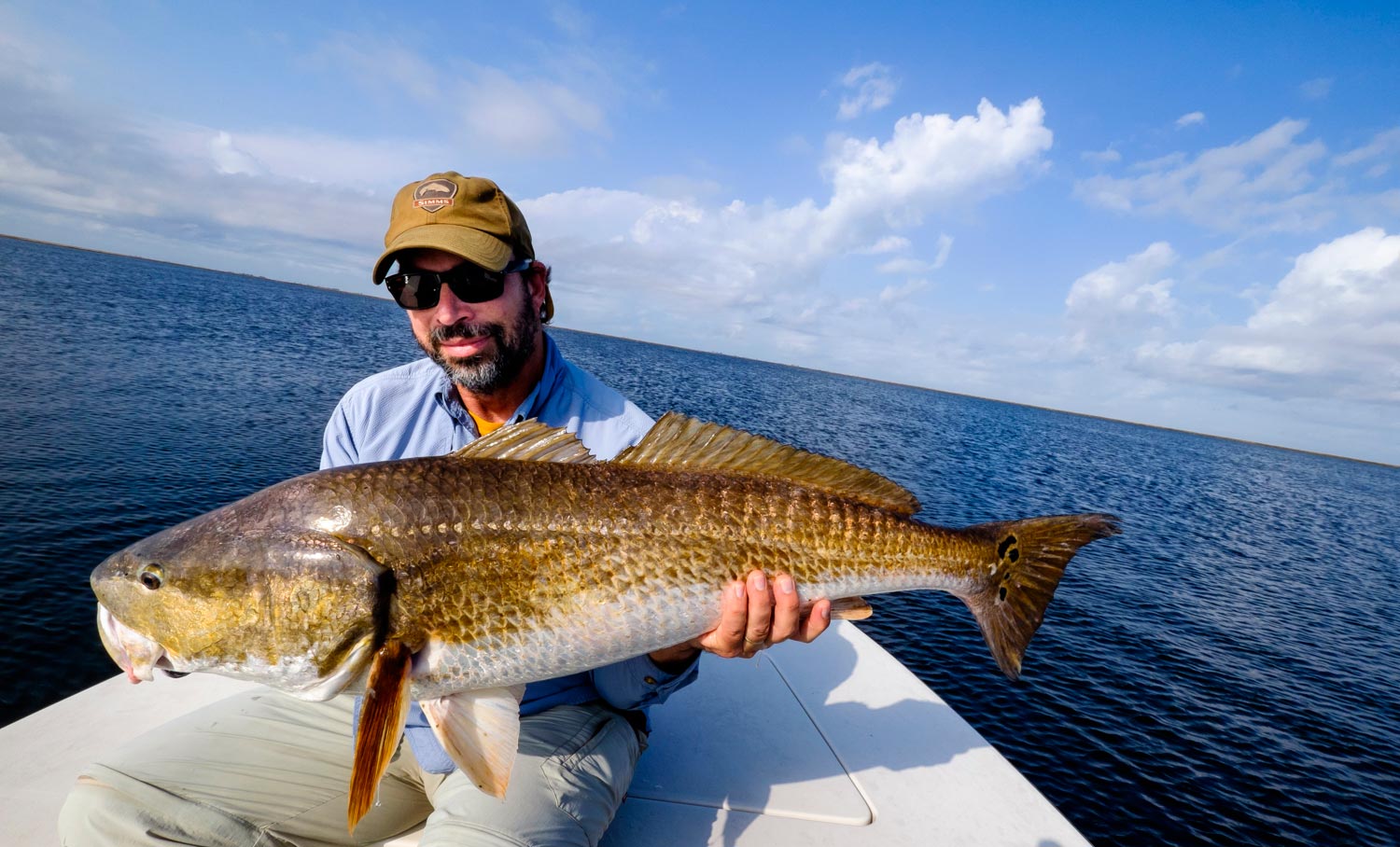
By Owen Plair
What makes the winter fishing for redfish so special?
There are not many fisheries that have a winter time season, due to migratory fish, cold temps, snow, and ice. One of the many great things about the Lowcountry is that it is a year round fishery for Redfish. When the bright green spartina grass starts to fade to brown and the water temperature dips below 65 degrees; you know winter fishing has arrived here on the coast of South Carolina.
One thing that’s special about the winter is the low tide fishery, which is mainly what we are fishing. The fiddlers go down in the winter which takes away the opportunity for tailing fish on the flood tides. During the low tides from mid December until the end of March, fishing can be some of the most visual of the year as large schools of 20-200 Redfish cruise the shallow water mud flats.
In the winter, water clarity is the best it gets all year. Colder water and less rain provides gin clear water on the mud flats, and small creeks. Clear winter skies make it easier to see these large schools as far as 50-100 yards from the boat, as they cruise down the mud flats in 8-10 inches of water. It’s as close to bone fishing that you can get and an absolute blast watching 5 or 6 different fish chase the fly.
Redfish school up in high numbers during the winter time to stay safe from dolphin, which are their number one predator. The dolphin also take advantage of the clear water and large schools during low tide, since there are not as many mullet or other bait fish for them to feed on. The redfish naturally feel more comfortable cruising the flats in numbers, when threatened by feeding dolphin.
Like I mentioned above, there are not a lot of baitfish and shrimp around during the winter months. One good thing about this is that the redfish
Read More »3 Bad Habits That Lose Big Fish
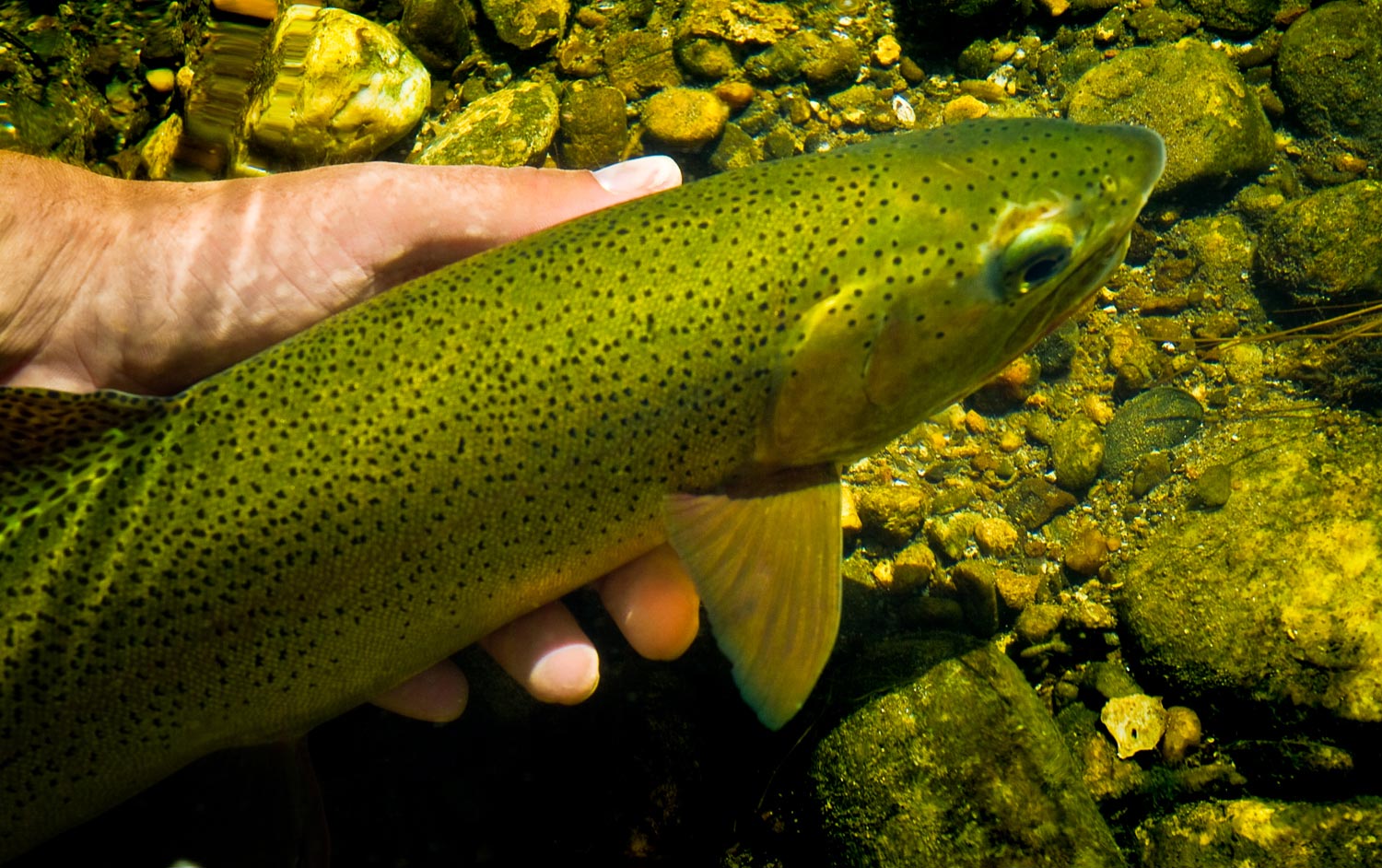
By Louis Cahill
Tired of hooking big fish just to lose them in the fight?
This came up the other day when I was fishing with a buddy. Like too many anglers, he’d been losing big fish, one after the next, over the same simple mistakes. It was a ‘face-palm’ moment when I pointed it out. In part because he actually knew better than to do any of these three things, and did them any way.
I’m not ragging on my buddy. I’ve seen plenty of anglers make these same mistakes and suffer the consequences. Simple habits you can get away with on the average fish become huge disasters when you hook a trophy. Have a look at this list and make sure you you’re not making the same mistakes.
3 BAD HABITS THAT LEAD TO LOST FISH
Ignoring wind knots
How many times have you felt a wind knot in your leader and thought, I’ll fix it next time? Maybe the fishing was hot and you didn’t want to miss any action. How many times did ignoring that wind knot result in breaking off a nice fish? The only time to fix wind knots is NOW. As soon as you find them, and it’s a good idea to check your leader often. If you find wind knots, chafing, nicks, or anything other than a perfect leader, fix it right away. You never know if the next fish to eat your fly will be a trophy.
A sloppy reel
Ever look down at your reel and see a sloppy mess of fly line poorly stacked on the reel? I know I have. Maybe things got hectic fighting the last fish or you just spooled up a bunch of slack line in a hurry when you saw a fish rising in the next pool. That sloppy reel is an invitation for disaster. Poorly spooled line can easily bind or knot when a strong fish starts ripping it off of the reel. When you see a bird’s nest in the making, stop, strip it all off of the reel and stack it neatly. It’s time well spent.
The statuesque angler
Like Fred McDowell said, “When the lord gets ready, you got to move.”
Read More »Look At It From The Fish’s Point Of View
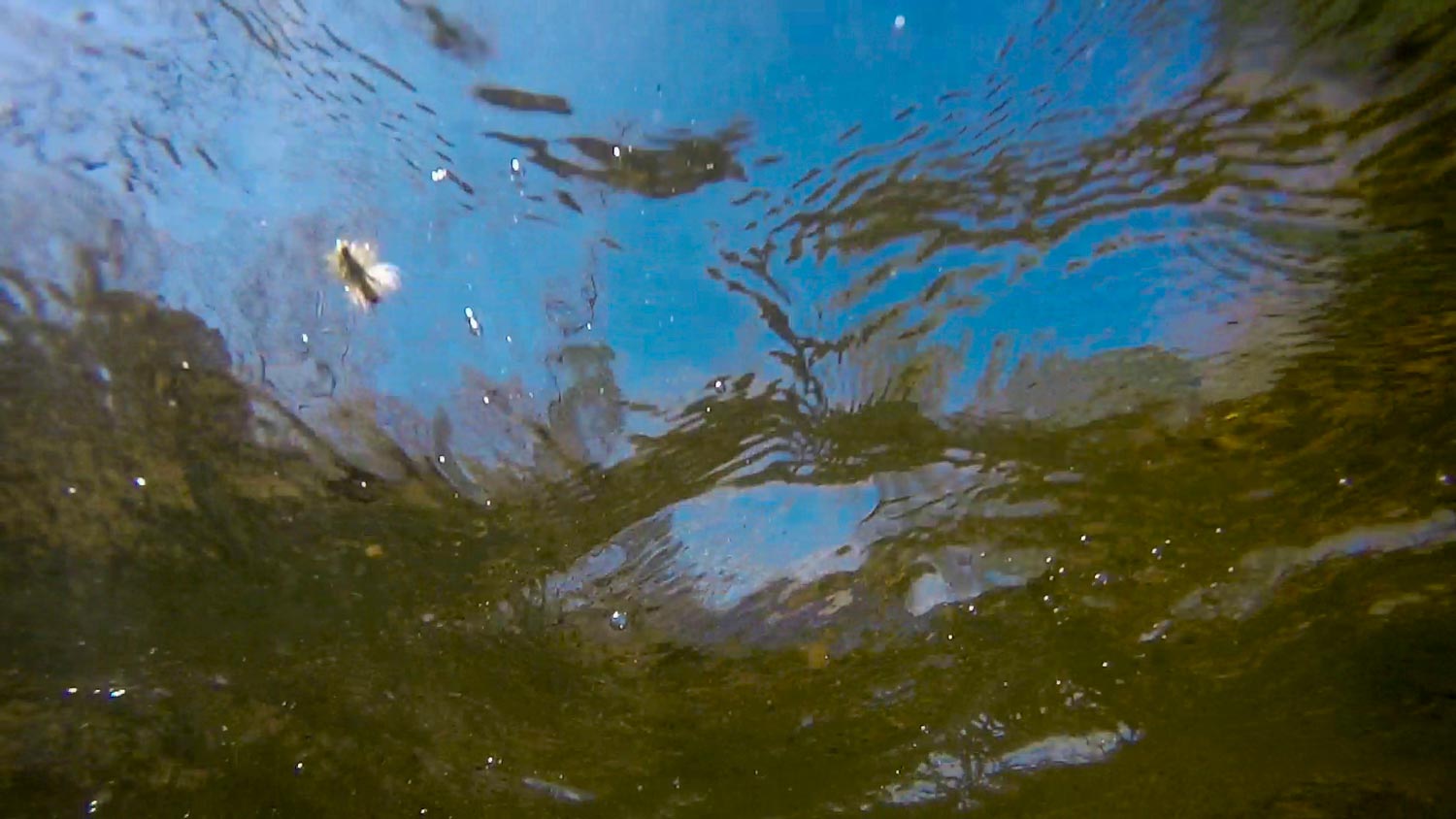
Light affects what fish see and how they eat.
I am teaching a young man to fly fish. We have fished well past sundown. There is only a band of warm red along the horizon giving way to a glowing blue sky. A bright moon and stars just beginning to show themselves. Forty feet away the surface of the water dimples and rings in rhythm as trout rise the the evening hatch. My student is frustrated.
“I don’t think they like this fly. Let’s change it.”
“It’s too dark to tie on another,” I tell him, “let’s try this one a little longer. Maybe a few feet longer cast.” I know this is the right fly. He just isn’t reaching the fish.
“I think it’s too dark. They can’t see it.”
“They can see it.”
“How? It’s totally dark. I can’t see it.”
I resist my smart ass nature. I don’t say, “Well they can sure as hell see the naturals.” In stead I tell him, “Look up. Can you see those swallows? That’s what the fish sees. Mayflies, like swallows flying above them.”
This is a simple idea, but one fly anglers don’t often think about. The fish looks at your fly from a different point of view. An almost exact opposite point of view than ours. The world looks a whole lot different from below. Light, and the where it’s coming from, play a huge roll in how you choose and present your fly.
Trout are always looking up.
Even when they are eating nymphs they look for food which is at their level in the water column or higher. Not all species feed in this way. Bonefish or carp for example feed on the bottom. Other species like tarpon look up for their food. The roll which point of view plays in their eating habits, and in your presentation, will vary from species to species. Let’s look at a couple of examples.
If you read the article, “What Does The Trout See,” you know that trout have very acute color vision when the light is bright. That doesn’t always mean that fly color is crucial in full sun. Let’s say it’s mid day and the sun is high in the sky. When fish look up at a dry fly, they are looking right into the sun. Not only is this uncomfortable for them, it seriously limiters their vision.
A fly floating on the surface with the sun directly above will appear
Read More »Presenting A Fly With Your Back Cast Is Like Being Ambidextrous
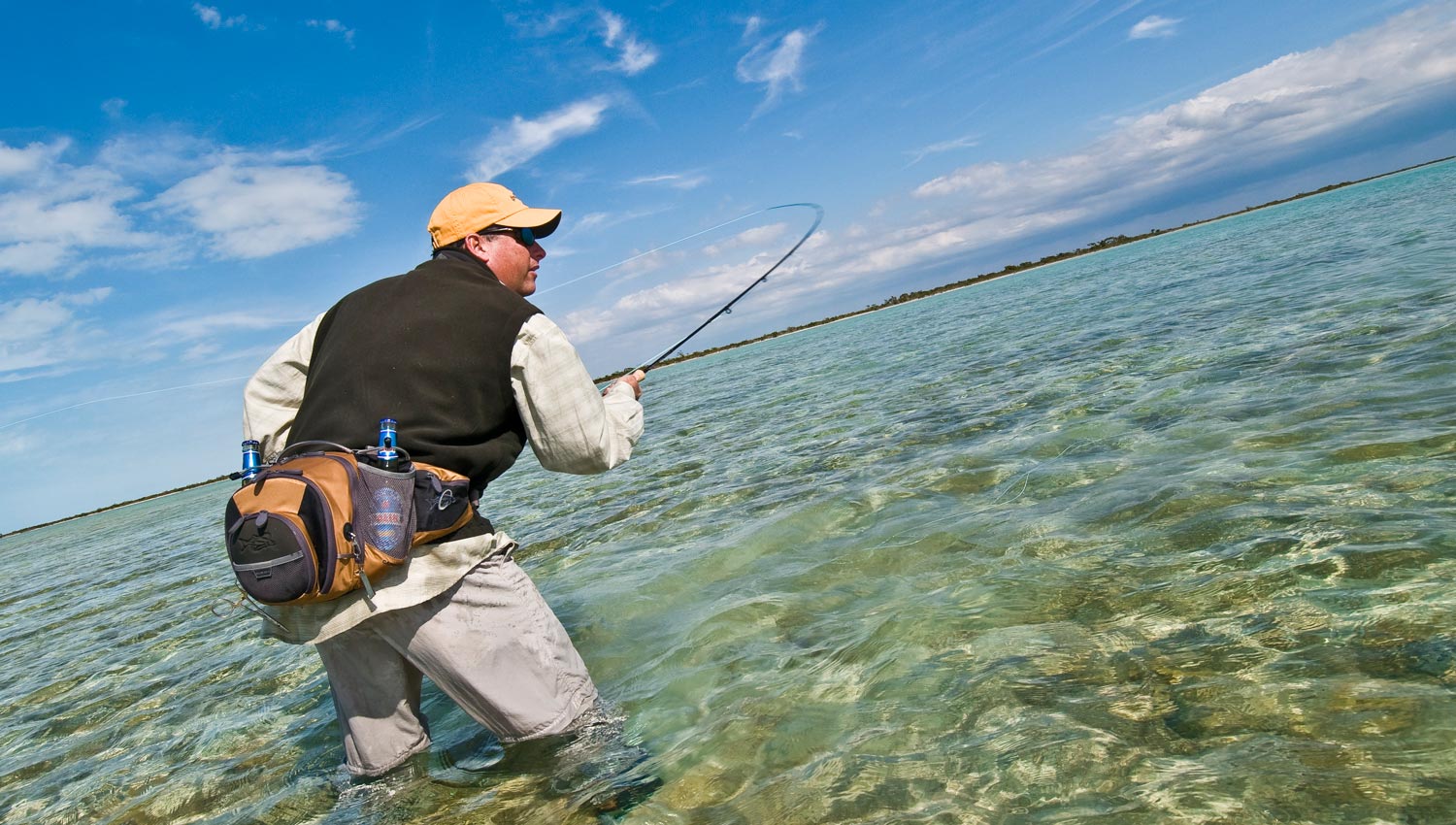
LET’S TALK ABOUT WHAT I THINK IS ONE OF THE MOST UNDER-RATED SALTWATER FLY CASTS. THE BACK CAST PRESENTATION.
Imagine being ambidextrous and never having to worry about what direction the wind is blowing. That’s what a back cast presentation can do for you. Using your back cast to present the fly to the fish is a key ingredient in the recipe for success in the salt.
We all know that taking advantage of every opportunity will increase your odds of catching more fish. If you can produce a nice presentation on your back cast you can take advantage of every opportunity, in any direction. Add speed and accuracy, and you will become a great saltwater fly angler.
Using the back cast as a presentation cast can be a foreign concept. Most anglers do not effectively utilize the incredible versatility of this cast, because they don’t even know to consider presenting the back cast to a fish. Everyone thinks a back cast is just a back cast and that’s all.
Let’s start looking at the many different uses for a back cast presentations. I will also explain how to use these tactics to help you catch more fish.
Angler Awareness
Your ability to have a constant awareness of wind direction is crucial. Whether you are wading or fishing from a boat, your orientation to the wind will constantly be changing. Spotting a fish will call for a quick choice of a forward cast or a back cast presentation. Your ability to know which cast will be best, ahead of time, is key. As you gain experience, this step will become automatic.
Loop Roll Over
Fully extending your line arm on your back cast presentation will help add much needed power to help roll over the loop, turning over the leader and laying your fly out straight. Lay your fly out straight and your odds of catching fish go way up.
Keep an Eye on Your Target
Since you are casting forward 180 degrees away from the fish during a back cast presentation, it’s difficult to keep an eye on the fish. Turning your body to the side a bit and opening up your stance will help you to swivel your head easier during casting to help keep your eye on the fish. Beware when you open your stance, you risk breaking your rod path off a straight line plane, causing your loop to open losing distance and accuracy.
Back Cast – Forward Cast
When presenting your fly on a back cast you should focus on all the same things you would when presenting a good forward cast. High line speed, tight loops, double hauling and a correct trajectory are all important for a successful back cast presentation.
Strip Quickly and Take Up Slack
Opening up your stance while presenting your back cast not only helps you keep an eye on the fish but will also
Tie Connor’s Jerk Minnow
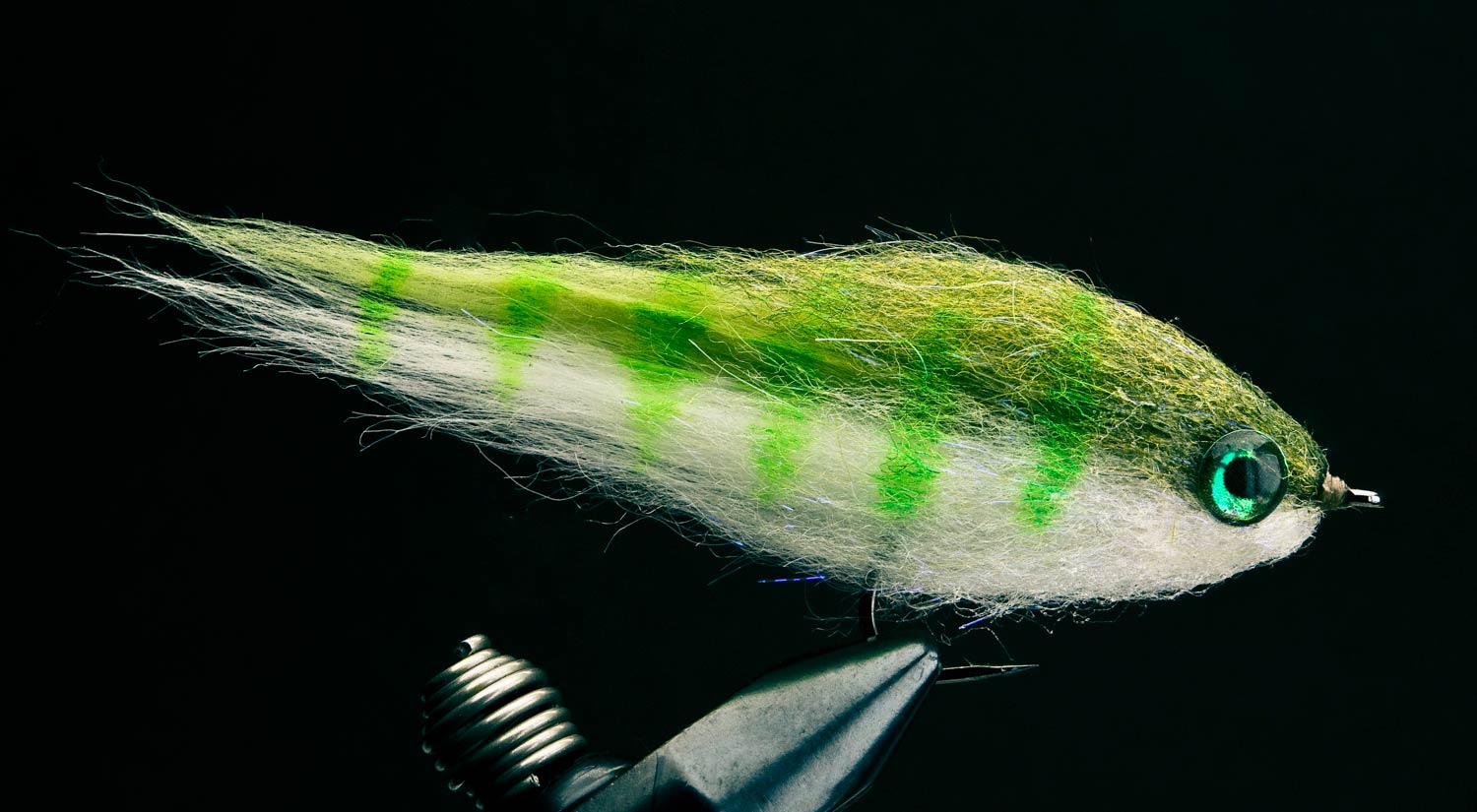
THIS DECEPTIVELY SIMPLE FLY IS ALL ABOUT THE ACTION.
Connor Jones, from Cohutta Fishing Company, ties this versatile baitfish pattern for bass and trout here in the southeast. It’s a simple fly with a clean profile and it’s easy to tie in a variety of colors.
The secret to the jerk minnow is it’s action. Connor builds a hard, hollow head, from Senyo’s Laser dub and Clear Cure Hydro, which captures air and gives the jerk minnow an erratic darting action, when stripped hard. Big predatory fish can’t resist it
It’s a fly that will produce fish on lakes and rivers. Tie it in the colors and size to match the forage species on your local waters. Strip hard and hang on tight!
Watch the video and learn to tie Connor’s Jerk Minnow
Read More »A More Effective Indicator Setup For Fast, Deep Water: Video
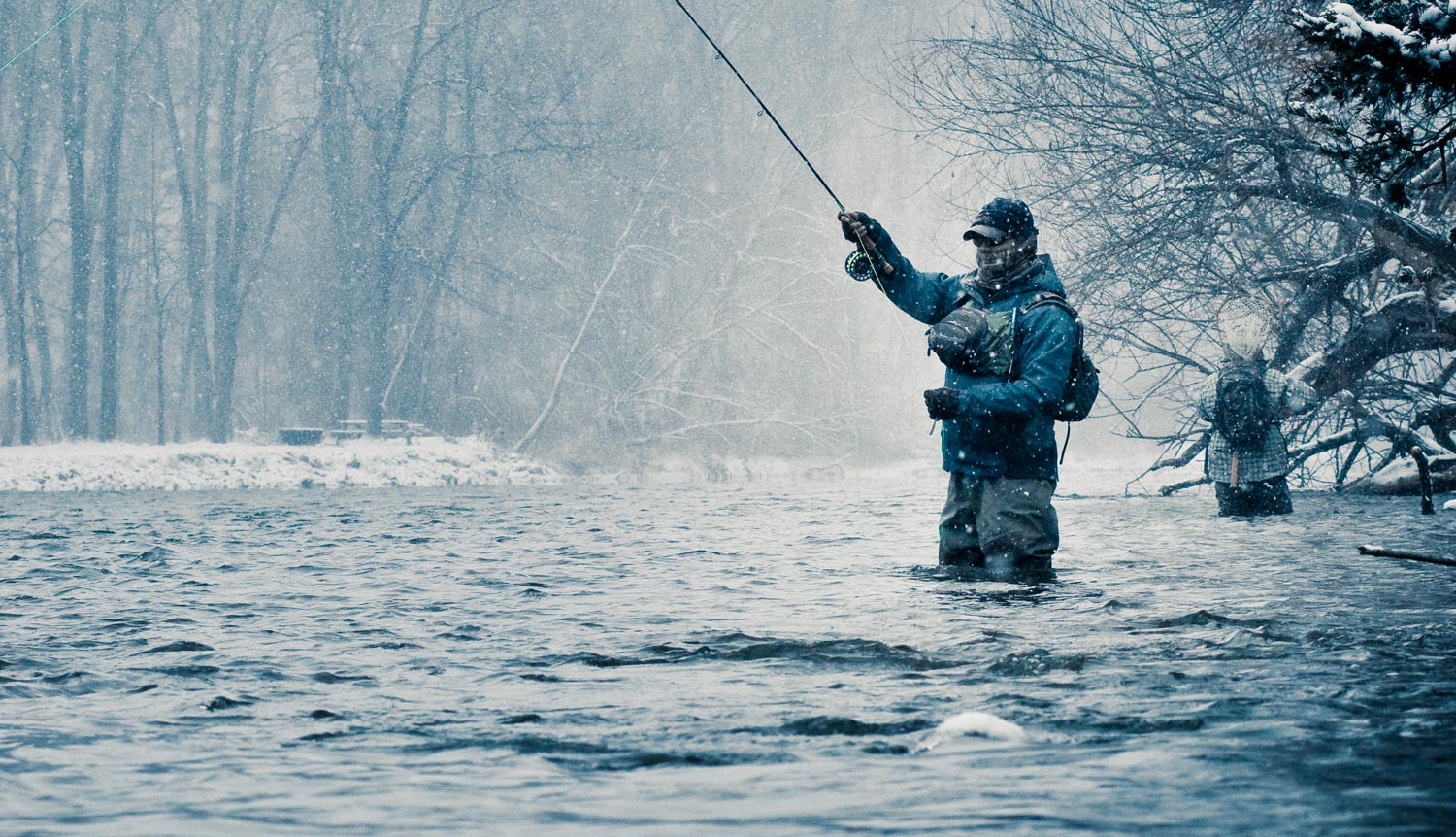
Here are two techniques for more effective fly-fishing in deep, fast water.
Indicator fishing with nymphs can be a very effective way to target trout in deep water. Still, it can be a challenge to get your flies in front of the fish, when the water is really deep and the current is moving quickly. During the colder months getting those flies down in the fish’s face is critical.
When I’m faced with these conditions, I like to use a weighted 90 degree indicator setup. It’s a simple trick but the results will shock you. When combined with a big initial mend, which moves your indicator upstream, your flies will rocket to the bottom. This setup is also more sensitive than a standard indicator rig. It will put you on fish in the deepest runs.
WATCH THIS VIDEO AND LEARN HOW TO RIG AND FISH THE WEIGHTED 90 DEGREE INDICATOR.
Read More »Fly Fishing Provides Great Health Benefits

I tell my clients, all the time, that I’m grateful for all the benefits fly fishing provides anglers. It provides us with one of the funnest ways to exercise, and it has the ability to completely wash away the stress of everyday life, from its therapeutic entertainment. We really should be thankful that this passion of ours provides us with so much more than just the reward of catching fish. Each and everyday we fly fish, we should take a minute to sit back and reflect on this fact. What other exercise activity can you think of that allows you to burn tons of calories during the day, and not have the faintest clue your even working out? Most of us aren’t extreme athletes, and even if we were back in the day, many of us have gotten older and are no longer. The great thing about fly fishing is you can tailor it to your own abilities and needs. It’s a great activity for maintaining your long term balance, dexterity and muscle strength, and it does a very good job of keeping your brain sharp.
I really think we could boost the growth of the fly fishing industry if more people were writing about all the great health benefits it provides, both mentally and physically? I’d love to see Yahoo, or one of those other giant headline news websites (that most of us visit daily) post on its home page, a fly fishing picture with the headline, “Lose 15 pounds and have a blast doing it.” We need to start thinking outside the box to promote and attract newcomers to fly fishing, and I think this could be one area most of us have been overlooking.
High Point
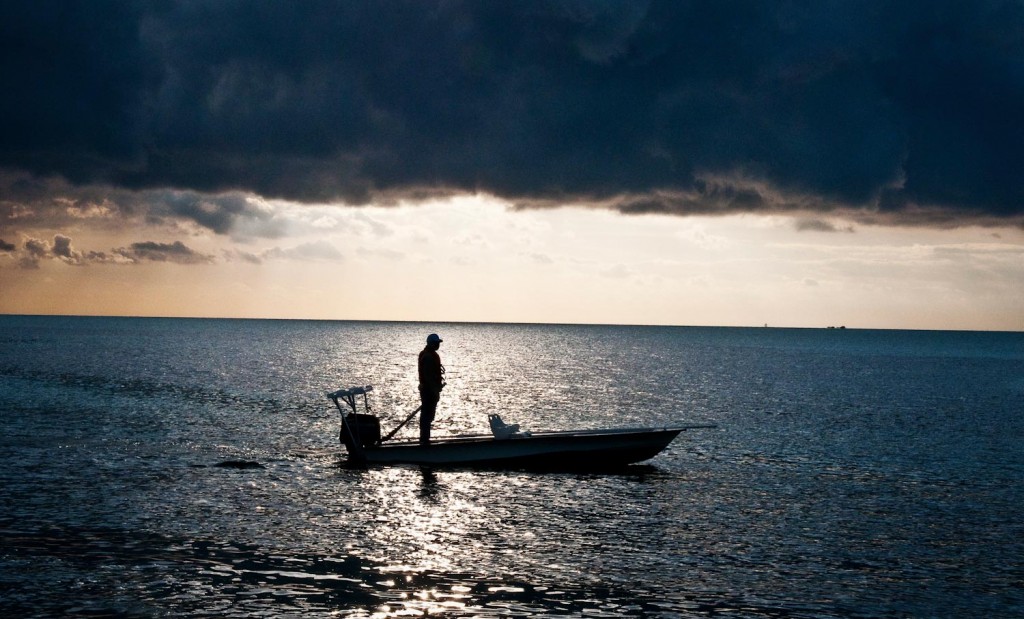
Tim looks like he has swallowed his tongue.
He’s pale, eyes dilated, the corners of his mouth twitching. He’s soaked in sea water, eyes burning and red. His fingers digging into his seat bottom, he squints and stiffens like a corpse preparing for the next wave which drops the little skiff hard. It sounds like a car crash and sends another five gallons of water into our faces. Nothing, it appears will stop the next navy blue, six foot wave from hurdling over the bow. It’s a fraction of an inch from doing just that when the bow lifts. The wave seems to ride the bow up, hovering literally an eight of an inch from crashing over into the cockpit for a few seconds. And then the whole thing starts again. Norman Rolle, our guide stands stoic in the back of the boat, a buff bearing the Rio logo pulled up over his face all the way to his Smith wraparound sunglasses. His left hand is on the back of Tim’s seat, his right gently twisting the throttle of the outboard, accelerating up the waves then coasting down, steering us carefully through the cross currents and surf crashing into, and back from the wall of jagged rock that the Bahamians call High Point. High Point is one of the most inhospitable places I’ve ever seen. It juts into the Atlantic like a knife blade for a quarter mile, huge rough hewn boulders guarding it’s coast. It separates the inhabited northeast coast of South Andros Island from the wild and isolated south. It can only be passed on a fairly calm day, and today is not so calm.
Tim leans over to me and says nervously, “Jesus, this is bad”. I’m suddenly aware that I’m grinning and quite possibly looking a bit out of my mind. “Oh no” I tell him, “I’ve seen it much worse”. “I did this once when the whole boat came out of the water on every wave, no shit, the whole boat dry every wave, you could hear the prop singing in the air”. He didn’t seem at all consoled so I quickly decided to have some fun with him. “Do you know how a flats boat sinks?” I asked. He shook his head. “Well, you see”, I continued, “when the first wave comes over the bow, it scares the hell out of you, but you think you’re going to be ok…you’re not, once that first wave comes over you’re fucked. The boat can’t climb the next wave with all that water in it, so the next wave fills it, then the third wave flips it over and if you’re still in it you’re dead, so what you want to do is, when that first wave comes over, pitch the cooler, then get out after it. That way you have something to hang on to.” For a minute I honestly thought he might puke, mulling over the idea of fighting me and Norman for a place on the floating cooler, but by then we were through the worst of it and Tim was clearly relieved to not be staring at a wall of water every ten seconds. I didn’t see any need in telling him I was messing with him, nor did I see any profit in telling him I knew a guy who’s boat had gone down exactly like that.
Read More »Know Your Lines
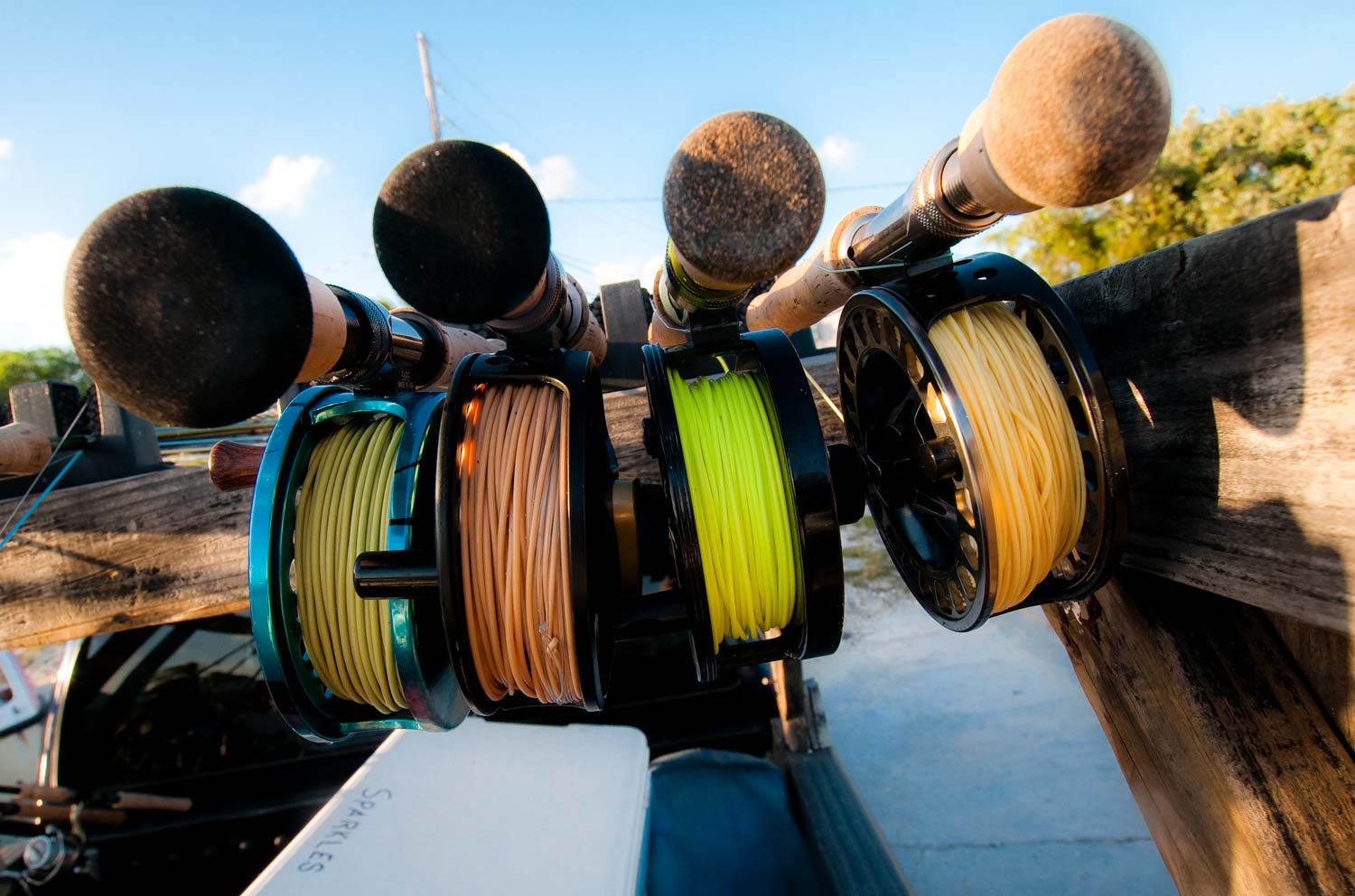
John Byron, AKA The Bonefish Beginner
“Lines are very difficult to learn.”- Benedict Cumberbatch
“It’s nice when someone knows their lines.”- Ed Norton
“Because I don’t know my lines, I really don’t know what I’m doing.”- Christopher Walken
Who knew these guys fished the flats?
WELL OKAY, MAYBE THEY’RE TALKING ABOUT SOMETHING ELSE. BUT IF THE TOPIC WERE SALTWATER FLY FISHING, THEY’D BE SAYING SOMETHING VERY WISE.
The starting point, the big decision point in selecting gear for the salt chuck is the size category of the outfit. Eleven- or twelve weights for tarpon and GTs. Nine or ten for permit. Seven-weight through nine for bonefish — maybe even a six-weight if it’s super calm or you want to show off.
And then, having selected the perfect flyrod in the most desirable weight and a truly magnificent reel to complement it, typically the last step is to buy some random flyline the same size as the number on the rod butt. Apply keen selection criteria like it’s cheap or I like the color or the sales guy talked me into it and you’re ready to go.
Right?
Wrong.
YES, ROD AND REEL ARE SIGNIFICANT, BUT I’VE COME TO BELIEVE THAT THE RIGHT FLYLINE IS EVEN MORE IMPORTANT:
Short shots at bonefish, heavy winds, big flies for big fish? You want a line that’s got its weight up front, one that loads the rod quickly and punches the fly out there. A Rio Quickshooter or Airflo Tropical Punch.
Spooky spooky fish, long casts, calm winds? You want a line that will carry the cast and not collapse on you when you’re working beyond the punch point of those front-loaded lines. Average/moderate/medium lines from Scientific Angler or Orvis or any of the rest of reputable line makers who offer special lines for the salt.
For all lines — the front-end-loaders, the lighter-longer classic fly lines, and everything in between — the ultimate description lies in the line profile, worth studying and understanding for all the lines you might buy.
Fishing the tropics, you need a tropical line, one with enough stiffness that it’s not an overcooked noodle in the sunshine. Stripers and albies? A cold-water line with enough flexibility to be castable even when it’s downright chilly.
Check the line coating too. Some lines sing going through the guides and you’ll either like that or not. Some cast farther for being super slick. Some just feel better than others. What matters is what suits you.
Colors too: can you see the line on the water? White and light blue are hi-viz. International orange even more so. But will it spook the fish? That’s one more thing to decide.
And then there’s the question of
